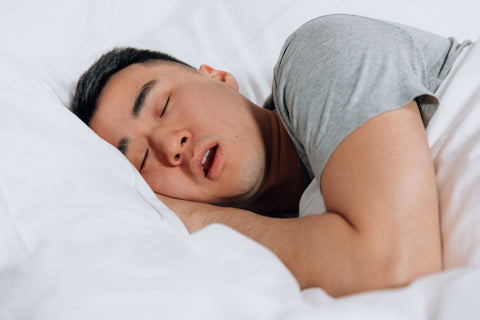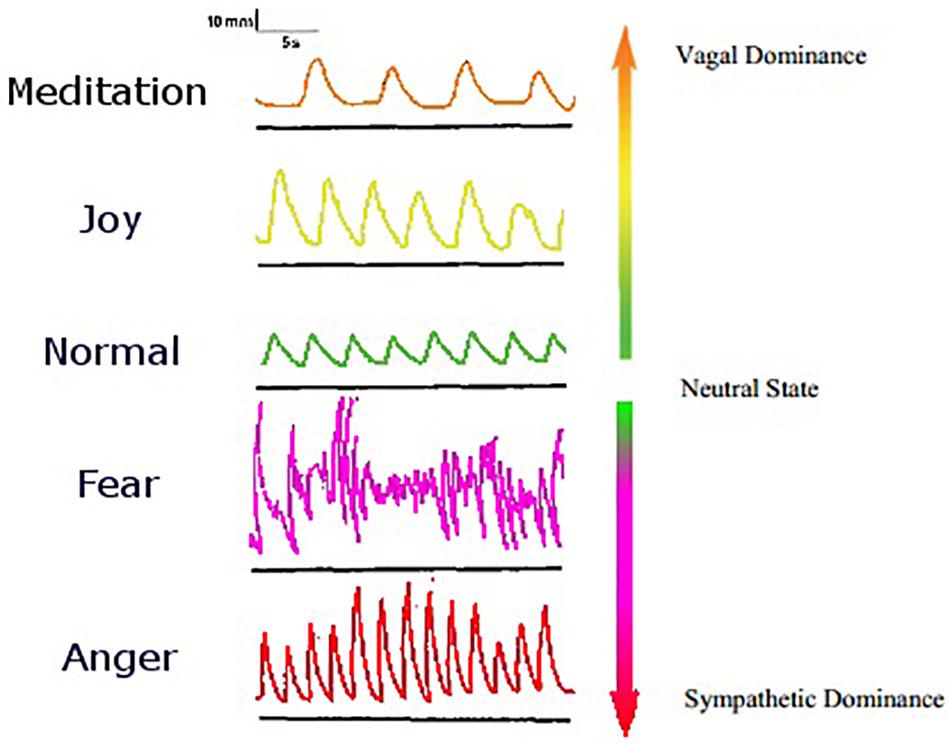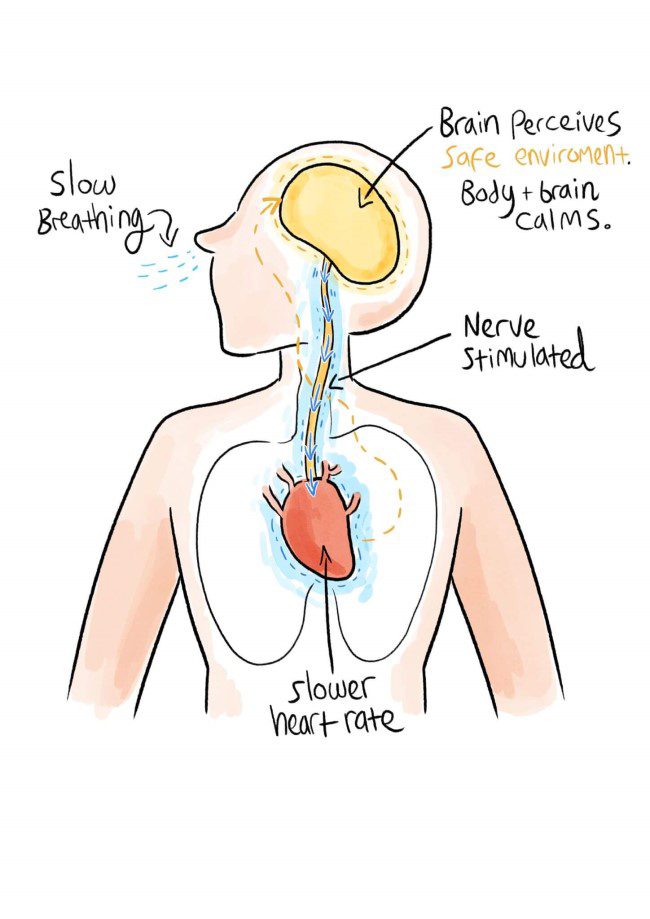Nearly 40 million adults suffer from an anxiety disorder. But that doesn’t mean that anxiety should be left untreated.
Anxiety is a common emotion we’ve all felt from time to time. However, chronic anxiety easily becomes disruptive, causing distress that magnifies worry.
If left untreated, anxiety can severely damage your health.
Coping mechanisms such as breathwork can help to break the cycle of anxiety or lessen symptoms, leading to more peace and calm in the midst of chaos.
That's why we’ve gathered a handful of deep breathing exercises for anxiety relief.

The best part? They’re simple to remember so you can practice them anywhere, anytime.
However, it’s important to first take a closer look at the dangers linked to prolonged anxiety.
The Dangers of Prolonged Anxiety
Stress and anxiety activate the sympathetic nervous system, flooding the body with stress hormones.
When stuck in this stress response for too long, noticeable symptoms arise, including:
- Body aches and pains
- Social isolation
- General irritability
- Appetite changes
- Difficulty concentrating
- Lack of sleep
- Social isolation
- Digestive issues
- Increased headaches/migraines

Moreover, some studies suggest that prolonged anxiety may even lead to diabetes, heart problems, and stomach ulcers.
There are many coping methods available for treating anxiety such as medication, counseling, or psychotherapy.
Breathwork, on the other hand, is yet another science-backed tool that we can use to alter our emotions. What’s more, it’s free!
Emotions and Deep Breathing: They’re Linked!
Have you ever paused to take a deep breath while feeling stressed or anxious and found that you actually felt... better?
Breathing is our life force, but it’s also directly linked to our emotions. Research shows that different emotions are associated with varying breathing patterns, and vice versa.
Irregular, fast, and shallow breathing patterns are the result of anxious feelings. On the flip side of the coin, fast and shallow breathing also leads to anxiety.
Conversely, feelings of calm and joy lead to deep, slow, controlled breathing.
Therefore, when you feel anxious, shifting your breathing patterns toward deep, controlled breaths can eventually evoke a sense of calm and happiness, diminishing anxiety.
Simple breathing exercises can even help cure insomnia by placing our bodies and minds into a relaxed, parasympathetic state.
So how does this all work?
When we change our breathing patterns, our heart rate slows and sends signals to the brain that it’s safe to relax. Our vagus nerve becomes stimulated, helping us shift into “rest and digest” mode and exit “fight or flight” mode.
This nerve runs from the brain stem down into the abdomen (which is also where our diaphragm, or major breathing muscle, is located).
How can one begin to integrate deep breathing exercises for anxiety relief? The physiological sigh is a great place to start.
The Physiological Sigh
Do you ever sigh when feeling stressed or anxious?
While sighing may not seem like a breathing exercise at first, it’s actually one of the most effective breathing techniques for bringing down stress.
There’s a neurological reason for it, too!
According to Stanford Neuroscientist Andrew Huberman, sighing acts like a killswitch for stress and anxiety, helping shift you into a calm mindset.
Sometimes called the physiological sigh, this quick breathing trick is centered around simple anatomy – it mimics how crying infants and children breathe to self-soothe.
To practice the physiological sigh:
- Inhale twice through the nose
- Exhale through the mouth slowly
- Repeat up to three times
@somnifix The #physiologicalsigh helps with #carbondioxide offload, boosting #oxygenation while lowering #stress 😮💨 #parasympatheticactivation #didyouknowfacts #breathingexercise ♬ Dreamy - Elijah Lee
This practice helps to improve oxygen uptake while regulating the offload of carbon dioxide.
Much like sighing, humming isn’t often thought of as a breathing technique. However, when done right, humming acts as an extremely effective deep breathing exercise for anxiety.
Humming Breath
Humming a favorite song is a sure way to quickly feel cheerful and joyous.
However, humming is also one of the best ways to activate our parasympathetic response, lowering anxiety.
Bhramari pranayama, or bee breathing technique, is a yoga breathing practice centered around humming.
In this practice, the exhalation resembles the humming or buzzing sound of a bee.
As we hum on an exhale, anxiety and stress levels fall. Blood pressure and heart rate follow suit, while airflow improves.
Levels of nitric oxide rise, a miracle molecule that promotes healing and oxygenation during nasal breathing.

Chanting “Om” during yoga or meditation also creates the same vibrations in your throat as humming, soothing your nervous system.
To practice humming breath, sit with a straight spine. Then,
- Breathe in through your nose for a few seconds
- Hum or say “hmmm” with your mouth closed until you feel the need to inhale again
- Inhale and repeat five to seven times
Yet another deep breathing exercise for anxiety? Alternate nostril breathing.
Alternate Nostril Breathing
Did you know that we were designed to breathe through our noses, not our mouths?
That said, most of us are habitual mouth breathers. Around 61 percent of people say that their default breathing method is their mouth.
When we mouth breathe, we over breathe. Moreover, mouth breathing leads to poor oxygenation, snoring, sleep apnea, nasal congestion, dry mouth, bad breath, cavities, and more.
Over time, it can even increase the risk of dangerous health conditions like high blood pressure.

Nasal breathing, on the other hand, lowers blood pressure, brings down our heart rate, and even improves oxygen flow.
Alternate nostril breathing offers a quick, effective way to shift your breathing from shallow, rapid mouth breathing to slow, controlled nasal breathing.
Researchers even found that over one month, those who practiced alternate nostril breathing exercises had improved oxygen flow and oxygen uptake. Therefore, they had healthier lungs.
To try alternate nostril breathing, begin by sitting in a comfortable spot and lengthen your spine. From here:
- Inhale and exhale through the nose for a few breaths
- Raise your right hand. Use your thumb to close your right nostril and inhale through the left nostril.
- Pinch your nose closed by holding both nostrils, holding your breath briefly.
- Use your ring finger to close your left nostril and exhale through the right nostril.
- Inhale through the right nostril.
- Pinch the nose closed on both sides again, briefly holding your breath.
- Open the left nostril and exhale. Then, inhale and continue cycling between the two nostrils.
- Repeat up to 10 times.
Afterward, you should feel a sense of calm and relaxation. However, nasal breathing all day and all night can help you shift into a calmer state in general.
Stop Sleeping With Your Mouth Open
Building up the habit of nasal breathing rather than mouth breathing during the day takes practice.
However, nasal breathing at night can take your sleep from poor to amazing.
Mouth breathing during sleep causes gasping, snoring, and even sleep disorders if left untreated for too long. Fragmented sleep follows.

Nasal breathing, however, not only oxygenates the body properly while preventing snoring, it keeps us out of a panicked, anxious state of fight or flight.
That said, it’s difficult to ensure your mouth doesn’t fall open while you’re dreaming. Enter: mouth tape!
Mouth taping at night seals the lips while promoting proper tongue posture, ensuring you’ll nasal breathe throughout the night. It gets better, too! Mouth tape = no more snoring!

SomniFix provides a gentle lip seal with Mouth Strips created with recycled, hypoallergenic materials.
Our Strips also feature a patented breathing vent if you need to breathe through your mouth overnight for any reason, such as the onset of overnight congestion.
Tape your way to a calmer mindset tonight! It’s as easy as breathing.






